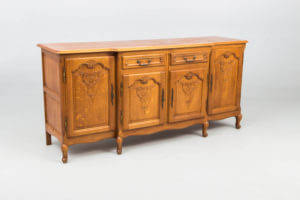
To calculate direct material, compare raw material at the beginning of the year and raw material purchases during the year with raw material left at the end of the year. A low manufacturing overhead rate indicates that your manufacturing operations are utilising resources efficiently and effectively. Therefore, 12.24% of monthly revenue will go toward the business’ overhead costs. The Kerkhoff Consulting Group is aPriori’s primary source for material price data.

Total manufacturing costs include all costs incurred in the period, regardless of whether the product was completely finished. As an indirect cost, manufacturing overhead it is challenging to assign overhead costs to each of the units produced. For example, rent and insurance on the manufacturing plant are based on the assets’ value, not on the number of units produced. Implementing online inventory control software can help improve forecasting. Changing production methods to better utilise raw materials is another way manufacturer can reduce direct material waste.
Example #3: Other direct costs
It will also give you all the necessary information and insights to reduce your costs and improve your profit margin. On the other hand, if you price your products too high, then you might risk missing out on potential sales and market share. Article by Melanie Chan in collaboration with our team of Unleashed Software inventory and business specialists. Melanie has been writing about inventory management for the past three years.
In contrast, manufacturing costs, for the most part, are sensitive to changes in production volume. In fact, total manufacturing costs tend to increase as production increases. Direct material is the cost of raw materials used in the manufacturing process which are inextricably linked to the final product. If your manufacturing company makes screws, the raw material is steel wire purchased from a supplier. Total manufacturing costs are often conflated with the cost of goods manufactured (COGM). COGM counts only the cost of inventory that was finished and prepared for sale in the period.
Example #1: Direct materials
Once you’ve estimated the manufacturing overhead costs for a month, you need to determine the manufacturing overhead rate. General and administrative expenses could be included in manufacturing costs by allocating these expenses based on a manufacturing metric such as labor hours or machine hours consumed in making the products. During the production period, Flying https://www.bookstime.com/articles/invoice-financing Pigs purchased an additional $23,200 in raw materials. At the end of the production cycle, the company had a final raw materials inventory of $17,600. However, many customers build component parts to inventory, buy parts to inventory, and then issue to the job. The critical element here is to ensure material is issued to the job, and accounted for properly.
- By having less produce in the warehouse at any given time, fewer storage costs are incurred, and your facility is far more organised as a result.
- Removing steps from the production process to save money also increases efficiency, ensuring that items are created faster (which leads to greater customer satisfaction).
- Additionally, Deskera MRP will give you analytics and insights to help you make decisions.
- The total manufacturing cost formula can be used alongside your net revenue to work out how profitably your business is producing goods.
- Using this kind of software with a built-in manufacturing accounting system frees up managers’ time for activities that help actually grow the company.
- Total Manufacturing Cost is an essential metric for understanding the productivity and profitability of a business.
Take advantage of any bulk-buy discounts or seasonal supply-side surplus to guard against off-season price increases. The Social Insurance Factor accounts for country and regional social insurance expenses and labor-related taxes. This includes unemployment insurance, health insurance, retirement and disability pensions, payroll taxes, etc. While COGM shows the costs related only to producing finished goods, COGS is the cost of only those goods that were sold. When all of the finished goods have been sold, then COGS is equal to COGM. To find the Total Manufacturing Cost, just add together the aforementioned three key costs from the specified financial period.
Steps to Calculate Total Manufacturing Costs by Region
While the total manufacturing cost is related to COGM, they have distinct differences. While the total manufacturing cost shows how much money was spent on all production activities, COGM details the costs related only to the production of those goods how to find total manufacturing cost that were finished during a given period. This means that unfinished products that were transferred into Work in Process (WIP) inventory are left out. If all production was finished at the end of the period, however, TMC and COGM would be equal.
